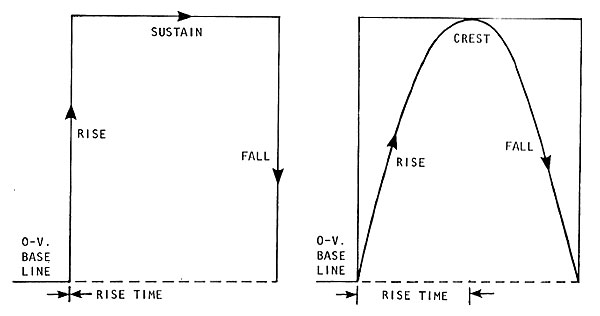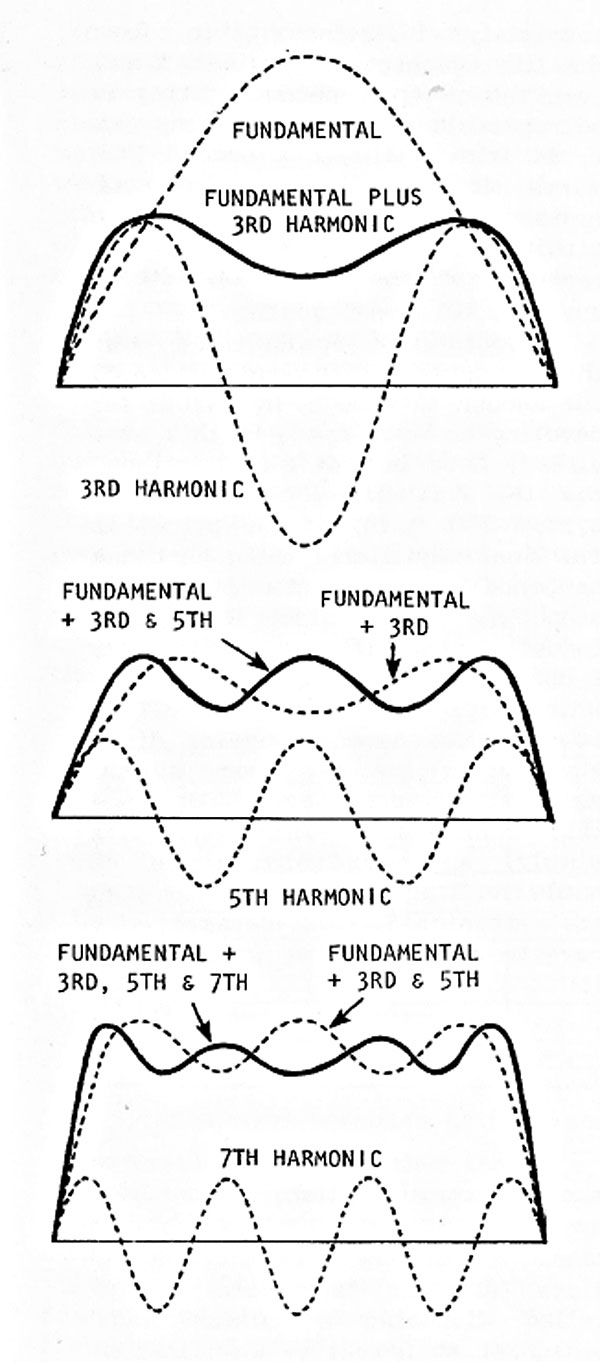| Columns Retired Columns & Blogs |
Excellent reporting from JGH at a time when vinyl was still the primary audiophile medium!
And he only used mainly 14-bits resolution back in the day.
A transient is nothing more than a (usually isolated) very steep rise or fall of energy, such as the lead-in to a squarewave. A half cycle of squarewave (fig.1, left) consists of an almost instantaneous rise above zero voltage (the base line) to a certain height, a period of unchanging level (the horizontal part) for a specified time, and an almost instantaneous fall back to zero. A half of a sinewave, au contraire, consists of the slowest rise and fall that the energy can have in order to reach maximum (peak) level and get back to zero again within the specified time, that is, the duration of one half cycle (fig.1, right).

In both cases, the (reciprocal of the) time required to leave the base line, attain maximum level, and return to the base line is determined by the fundamental frequency of both waves. (Since the fundamental defines a full cycle—above and below zero—the half cycle must occur in half the time, ie, a 1000Hz fundamental will have a 1/2000-second half-cycle.) Thus, the major functional difference between the sinewave and the squarewave is the time it takes for the signal to rise to its maximum level and then to fall back to zero.
A pure sinewave has only one frequency: its fundamental. It contains no harmonics. A squarewave is a fundamental plus a theoretically infinite number of odd-order harmonics of that fundamental—the fundamental frequency multiplied by 3, 5, 7, and so on ad infinitum. Fig.2 shows how the addition of each succeeding odd-order harmonic steepens the leading edge of the original sinewave and broadens and flattens out the top. By the time the 9th harmonic is tacked on, the leading (and falling) edges of the wave are almost vertical, and the transition between horizontal (top) and verticals is almost square. By the 11th, the waveform has become a perfect squarewave (or half there of). Thus it is usually stated that one of the requirements for perfect reproduction of a squarewave is high-frequency response flat to at least 10 times the fundamental of the wave.

In order to reproduce a 20kHz squarewave, the system would have to be flat to around 200kHz. But 20kHz is already higher in frequency than most people can hear. As for the remaining few who like to commune with bats, it is doubtful that any of those could claim acuity out to 40kHz. And 40kHz is only the 2nd harmonic of 20kHz! In other words, that 20kHz could have any wave shape—square, spiked, sawtoothed or squiggly, and no human could conceivably tell the difference, unless the reproducing system was causing that wave to splatter auditory clues into the lower-frequency ranges. That is, unless it was distorting the signal.
The audible superiority of the best audiophile music systems, with their legendary slew rates and megahertz bandwidth, is due only to the necessity of their having to cope with a substantial content of ultrasonic impulse material put out, along with the signal, by cartridges in which transient response has been emphasized in order to compensate for transient deficiencies from discs. When transient response in the recording is adequate, the need for its exaggeration ceases. And when the recording medium produces relatively little ultrasonic garbage, and most of that is continuous rather than impulsed, it makes unnecessary a preamp's improved ability to handle ultrasonic impulses.—J. Gordon Holt

Hi
I usually agreed to Gordon's seasoned comments in his reviews as he knew what he was talking about.
But for his above review, I would NOT. IMO, he seemed to be 'bewitched' by the then 'revolutionary' 14-bit digital technology as he concluded his above review by quoting:
"I am going to buy one (and its companion SL-2000 Betamax recorder) if I have to auction off my mother to do it!"
He acted like beside himself as if he were a huge impulse buyer !!
I said so from my vinyl experience. My vinyl music sounds better than my digital music processed by my 24bit/192KHz DAC fed by streaming & CD/DVDs. Yes, digital music sounds clean, quiet, transient fast etc etc.
Yet it lacks something, something we can only experience in a live concert !!!
Quality vinyl music does deliver this livelike feelig that digital misses, IMO.
An analogy is: an electrostatic loudspeakers (digital) vs conventional driver loudspeaker (analogue) !!
Listening is believing
Jack L

Did JGH read my comment on the MQA thread? ;-)

between posts. I thought of writing something about it, but did not want to seem paranoid.